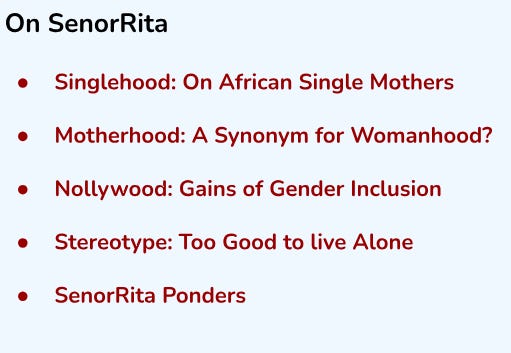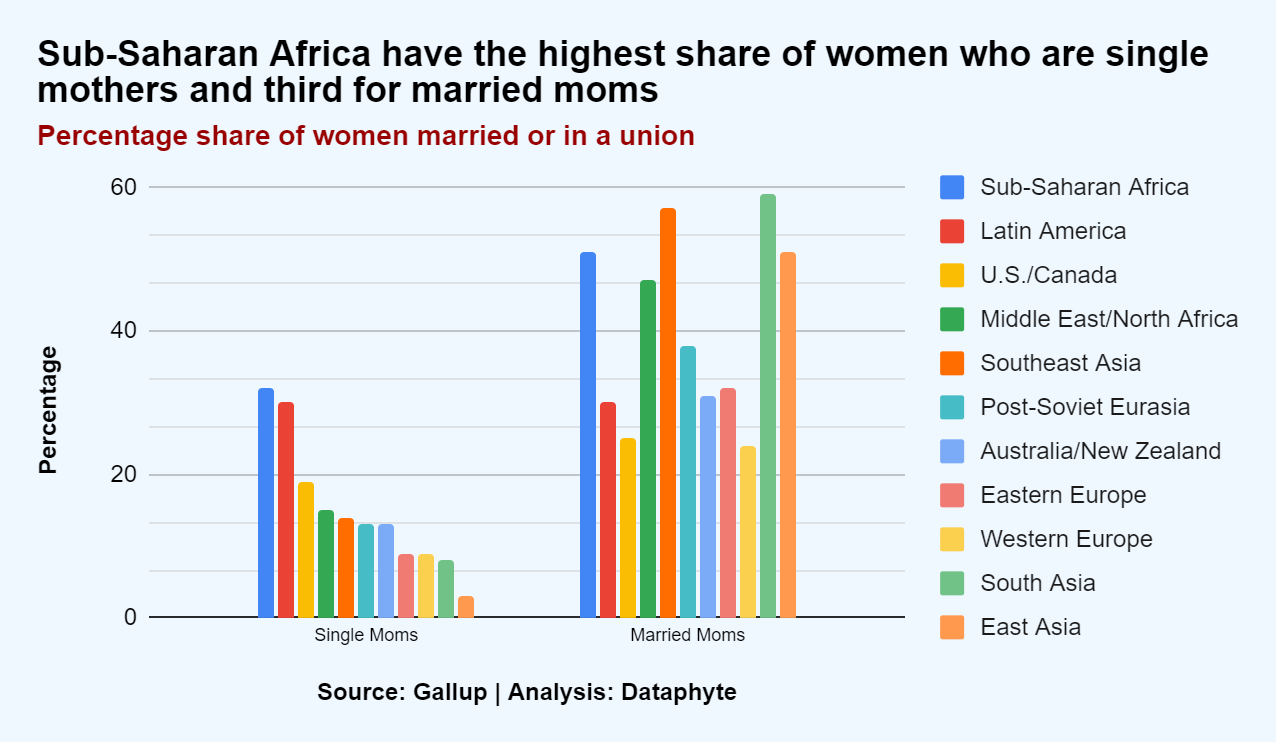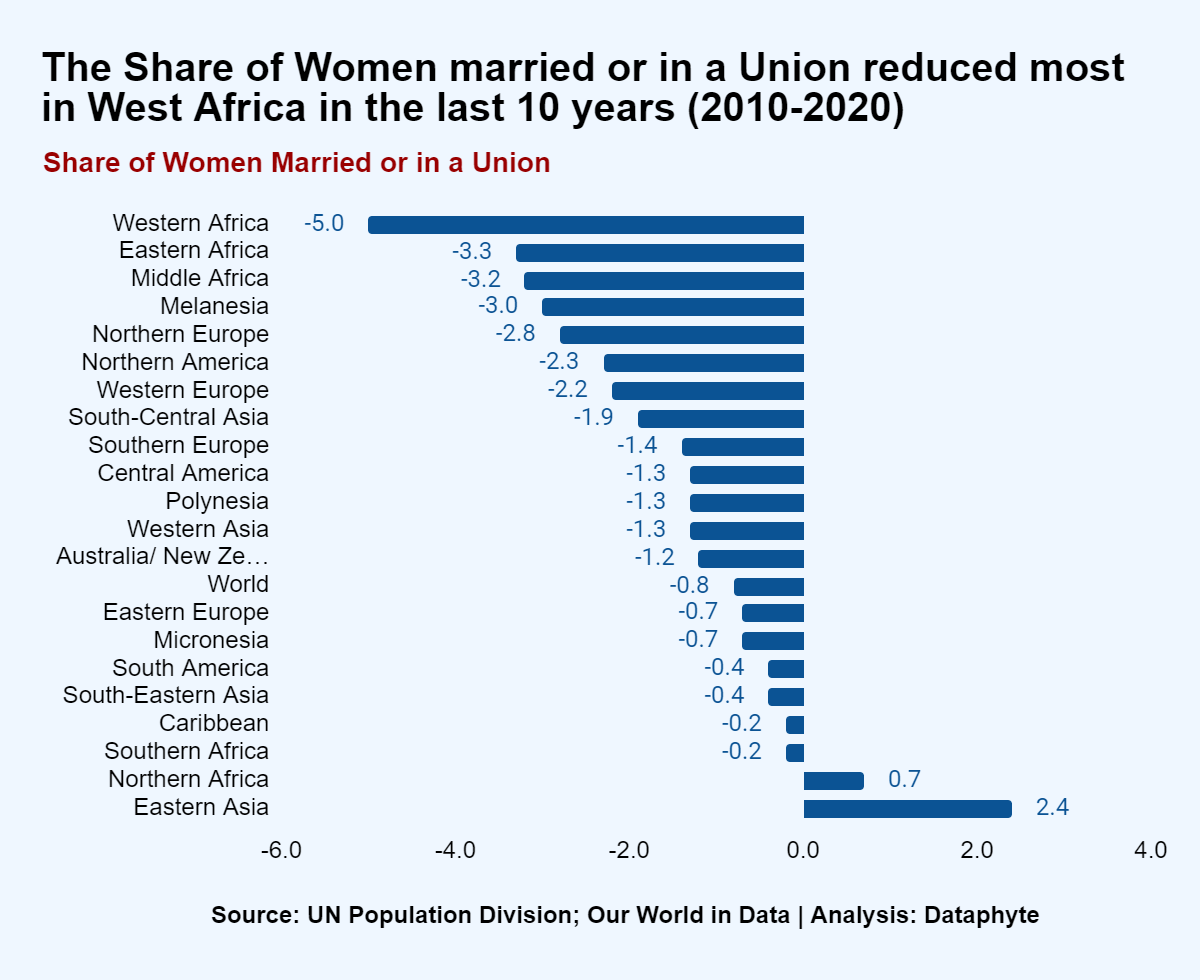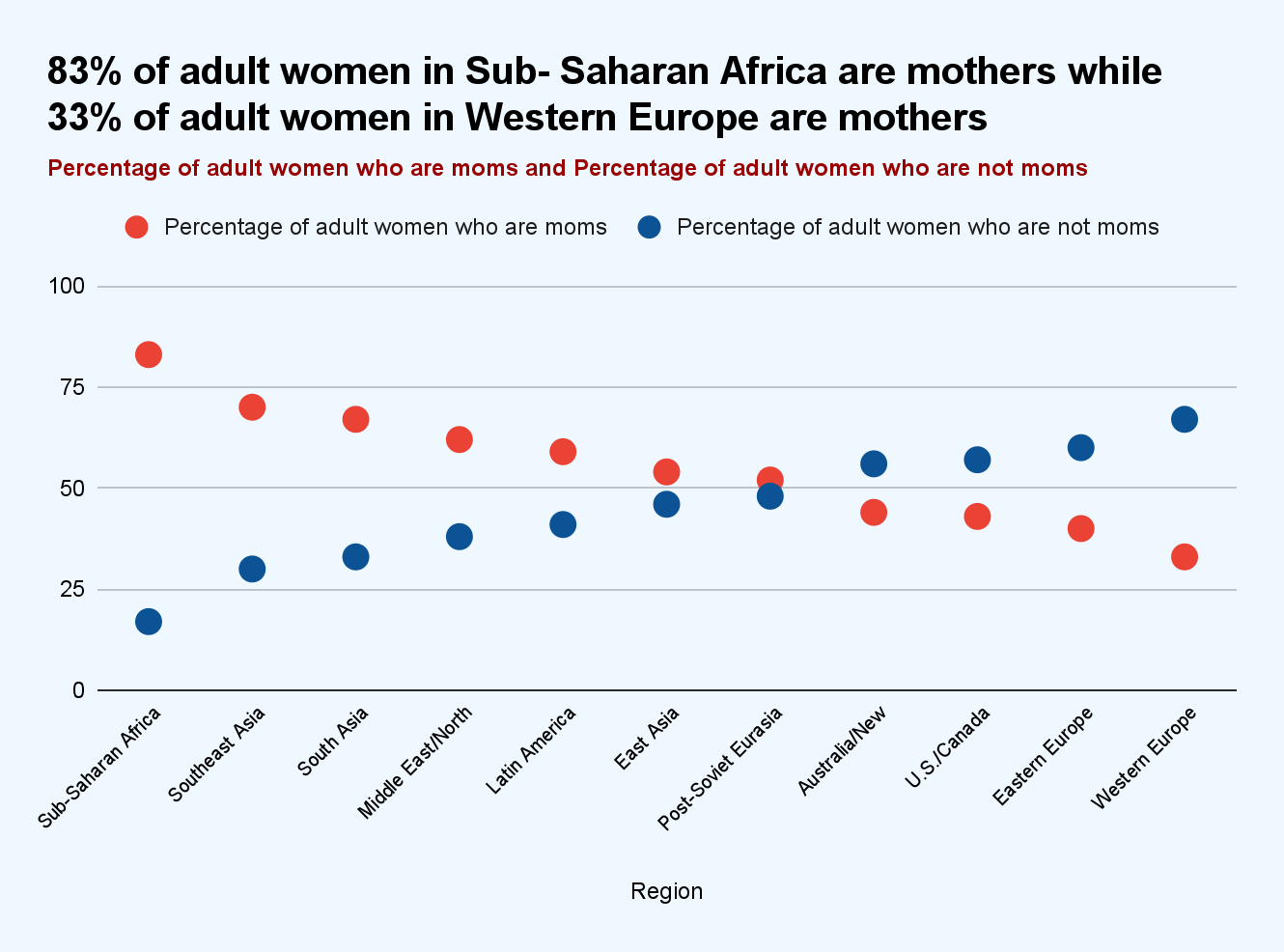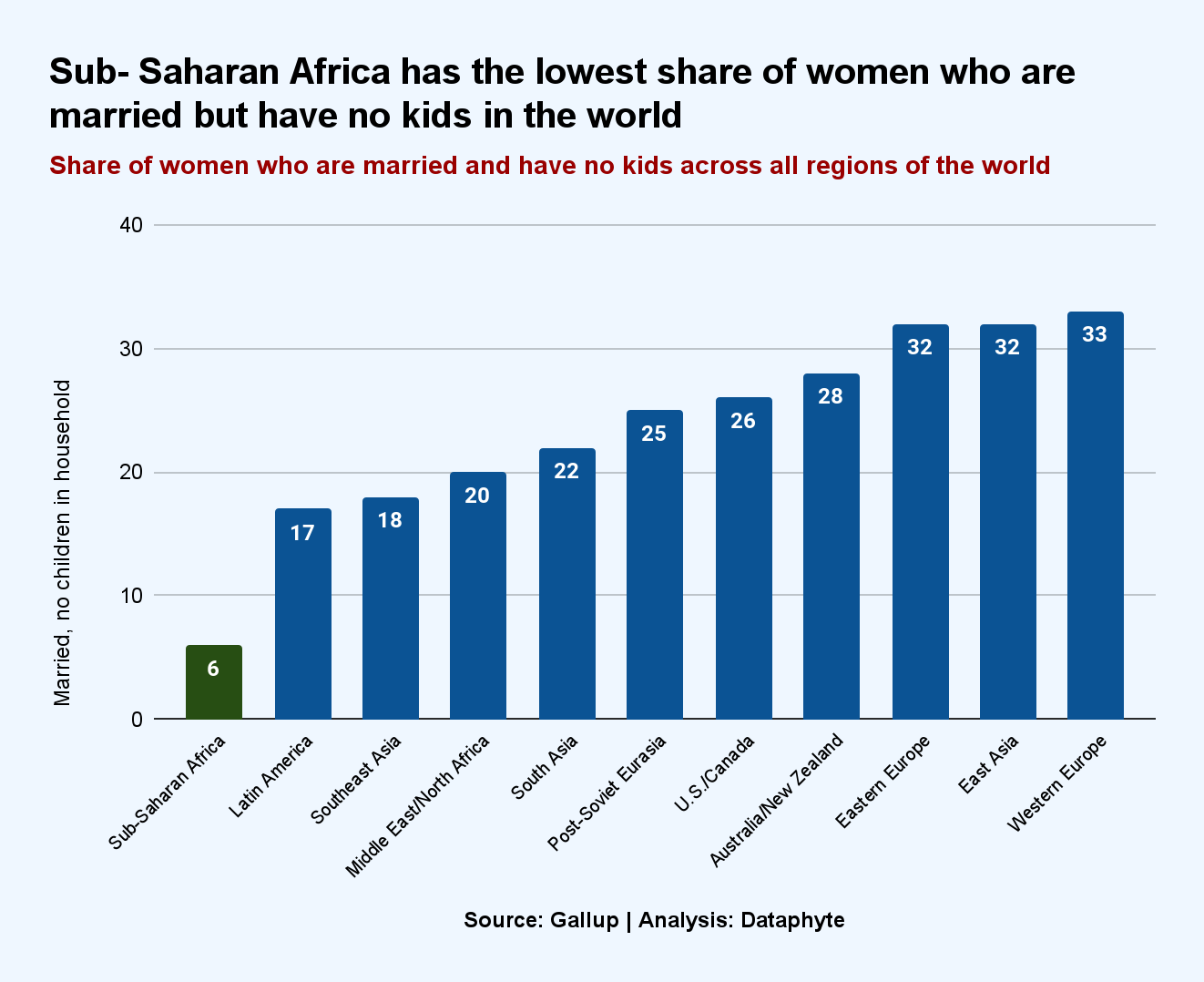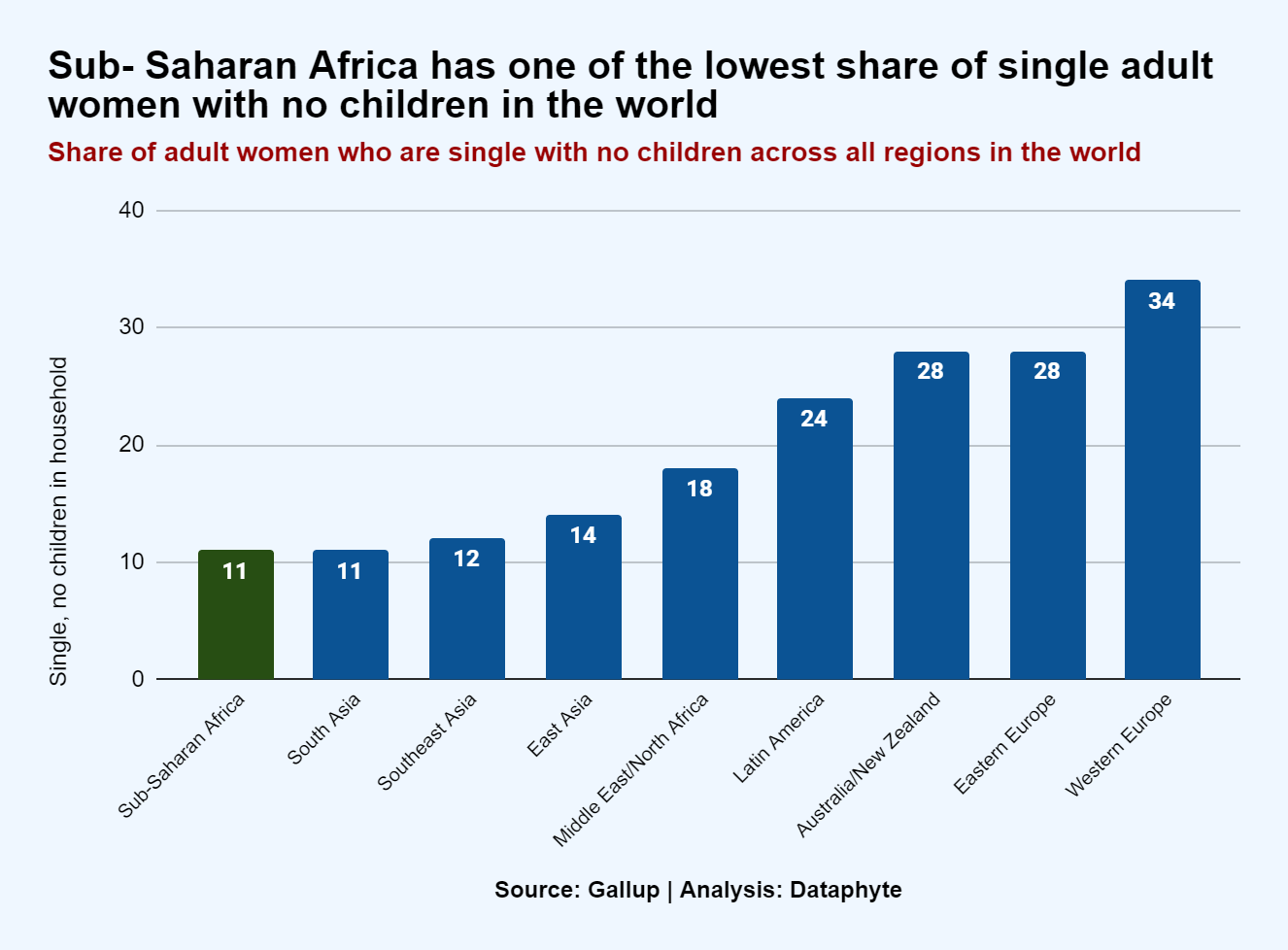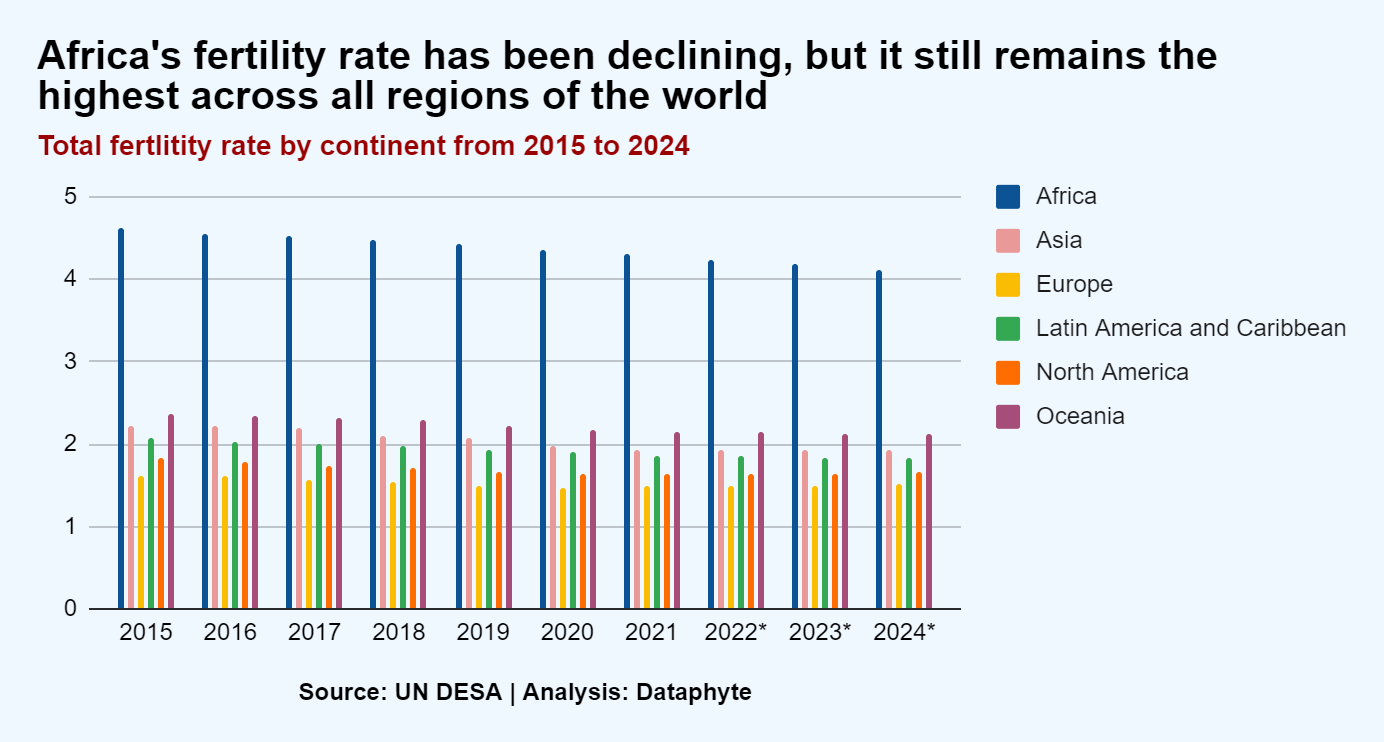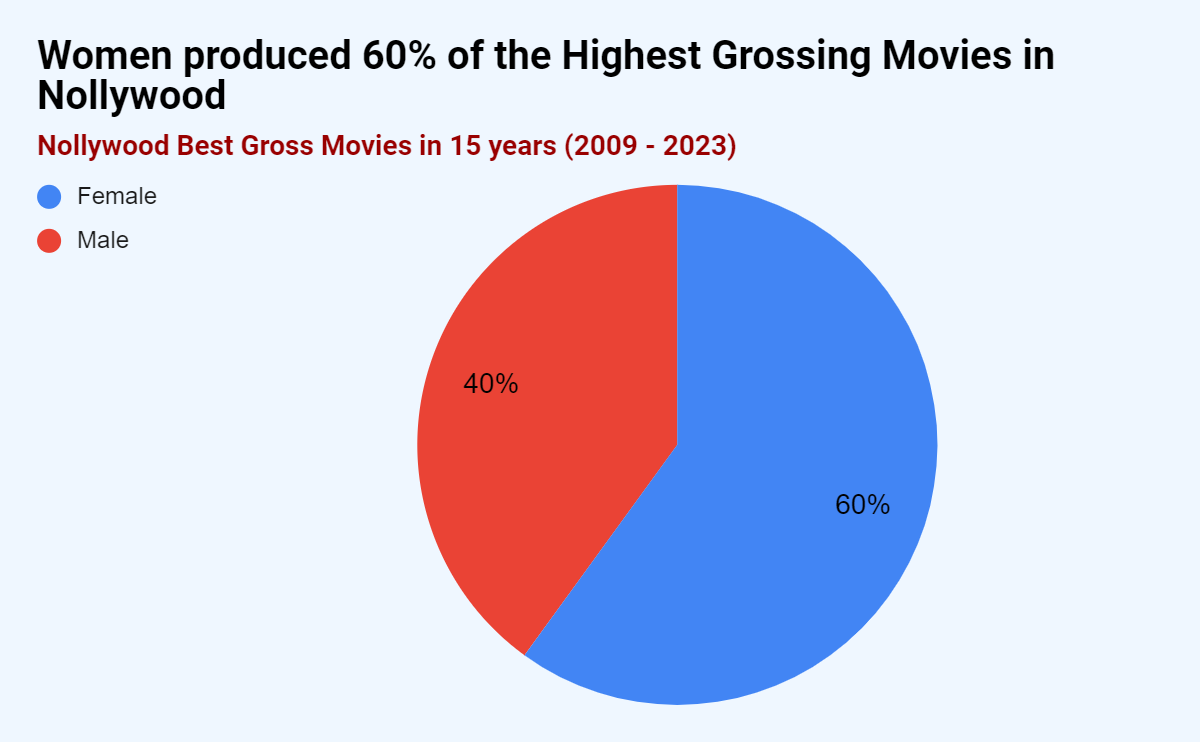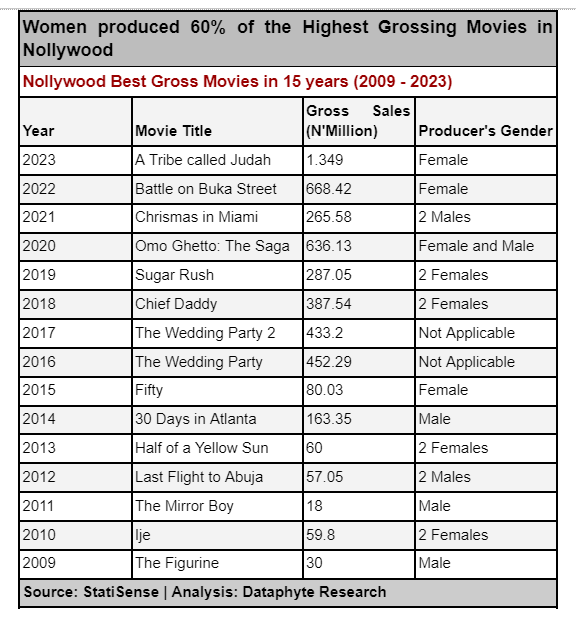Here at Last!
We are glad to present the maiden edition of our SenorRita Newsletter.
Many thanks for your reception and reviews of our first two 2024 releases, Pocket Science and Marina and Maitama.
SenorRita is an inquiry into the delicate issues at the intersection of the male and female genders.
For instance, in one breath Senorita is the title for a woman. In the same breath, Senor is the title for a man. A woman’s identity is often tied to a man’s and not the other way around.
SenorRita is all about Rita finding that wholeness and identity of her own.
SenorRita invites the female and male genders to the table to untangle together the knotty topics of gender equity and inclusion.
Here’s to fun reads!
From the Dataphyte Insight Team
Singlehood: On African Single Moms
Single Moms on the Rise
Sub-Saharan Africa has the highest percentage of single mothers in the world, which is quite significant at 32%.
This is followed closely by Latin America with a share of 30%, and the US/Canada takes the third place with a 19% share of women who are single mothers.
These regional variances highlight differences in family structures, taking into account variations in the economy, culture, social norms, and access to contraceptives and sex education.
Insufficient access to family planning resources may result in unplanned pregnancies and greater instances of single motherhood. The provision of healthcare and education can influence decisions related to family planning and reproductive choices.
Gender inequality is widespread in some Sub-Saharan African societies, which can affect women's ability to make autonomous decisions regarding marriage and family planning.
Married Women becoming Fewer
West Africa, Eastern Africa, and Middle Africa have witnessed the most significant decline in the proportion of women married or in a union compared to other continents across the globe.
West Africa, in particular, had the biggest drop in the number of married women, with a 5% drop in ten years, spanning from 2010 to 2020. Middle and East Africa come second and third, respectively, with a 3.3% drop in the share of married women. in Eastern Africa and a drop of 3.2% in Middle Africa.
These statistics raise questions about the socio-economic, cultural, and policy factors influencing Sub-Saharan and West African family structures.
On the other hand, Northern Africa and Eastern Asia are the only regions that had an increase in the share of women who are married from 2010 to 2020.
Why African Women are remaining or reverting to single
In the first instance, the increasing prevalence of single motherhood in Sub-Saharan Africa might be due to the complex socio-economic problems associated with the region.
Economic turbulence, such as high unemployment rates, poor access to education, and poverty, are major issues affecting the stability of relationships.
Couples who struggle to maintain their marriages in the face of financial troubles may become single mothers due to the economic demands of partnerships and raising children.
Social norms too greatly affect views on marriage and family dynamics. So, the increasing societal acceptance of single motherhood can encourage more women to avoid getting into or staying in marriages, which raises the number of single mothers.
Motherhood: A Synonym for Womanhood?
When you see a woman, what do you see?
A movie producer or a mother?
Women in Sub-Saharan Africa are more mothers than any other vocation.
Eight in every ten women in Sub-Saharan Africa is a mother. While only 3 in every 10 women in Western Europe is a mother.
Could this mean that women in Sub-Saharan Africa value having children far more than women in other parts of the world?
The high fertility rate in the region suggests this. Yet women could be victims of circumstances that predispose them to become mothers so early, even against their will.
Of course, there are fewer married women without children, as well as fewer single women without children in Sub-Saharan Africa.
Just 17% of adult women do not identify as mothers, compared to 83% who do. Compared to other regions, Sub-Saharan Africa has the largest number of women who are giving birth and the lowest percentage of women who are childless, which makes this pattern particularly noteworthy.
Sub-Saharan Africa has just 6% of married women without children in their families, suggesting a cultural tendency towards earlier childbirth and bigger families.
On the other hand, with 33% of the distribution, Western Europe leads due to its varied social. norms and increased acceptance of postponed parenting.
The lowest share of single adult women with no children, 11%, is shared by South Asia and Sub-Saharan Africa, which may be a reflection of cultural norms about early marriage and family life. Western Europe, on the other hand, leads with 34%, indicating a trend towards later family formation and more personal liberty.
The high percentage of childbearing women in Sub-Saharan Africa is consistent with the region's well-known high birth rates. According to the United Nations Department of Economic and Social Affairs, Africa has traditionally had the highest fertility rates, often exceeding the global replacement level of 2.1 children per woman.
According to Lucille Maqubela, in the research work “Gender, Motherhood, and Parenting in Africa,” in many African countries, women's roles as mothers and carers are highly valued according to traditional traditions.
Women may, therefore, experience pressure from society to carry out these responsibilities, which might affect their adoption of family planning.
Furthermore, a lack of knowledge and use of family planning techniques may result from Sub-Saharan Africa's low access to healthcare and educational opportunities.
When combined with financial difficulties, this might lead to women having bigger families since they do not have the resources to manage their reproductive choices properly.
The smaller proportion of women who are not mothers in Sub-Saharan Africa also draws attention to the possible obstacles women in the region experience due to early and lengthy motherhood.
These obstacles may include problems in pursuing other life pathways, such as education or professional growth.
Nollywood: Gains of Gender Inclusion
Twelve of the 20 people who produced the 15 best-grossing Nollywood movies in the last 15 years were women.
This means 60% of the producers for all the movies were women, even in cases where there are multiple producers.
Source: StatiSense | Analysis: Dataphyte Research
This feat highlights the economic possibilities that gender access, equality and inclusion can bring to an industry and the economy as a whole.
Top of this 15-movie list is Funke Akindele’s “A Tribe Called Judah,” which has exceeded the N1 billion mark at the box office, making it the highest-grossing Nollywood film of all time.
This groundbreaking achievement marks the first time a Nollywood movie has achieved impressive ticket sales across various cinema centres. Similarly, the movie is the fastest to hit the N1 billion mark, only after three weeks of its release.
The only other movie that has achieved the N1 billion feat is a Hollywood movie produced by Marvel Studios — Black Panther: Wakanda Forever — which grossed NGN1.04 billion.
Singlehood: Too Good to Live Alone
In Nigeria, unmarried women face discrimination when searching for a place to live. Landlords refuse to rent their properties to single women and there is a general bias against women acquiring housing by themselves.
However, both the Nigerian Constitution and the Land Use Act are committed to promoting equality and eliminating discrimination. They guarantee that women have the same rights as men when it comes to renting and owning property.
Source: The Nigerian constitution
Section 43 of the constitution also declares the ownership of immovable property to be a basic right. It ensures that every citizen has the right to acquire and own property, regardless of gender. As a result, regarding property ownership, including the ability to lease or rent homes, women have the same legal status as males.
Source: The Nigerian Constitution
The Land Use Act of 1978 establishes the legal framework for land ownership and tenure in Nigeria, in addition to the requirements of the constitution. The Act does not impose any gender-specific restrictions on tenancy or property rights. It is free from discrimination against anyone based on their gender, disability, or faith.
All individuals have the right to use and enjoy land within the bounds of the law.
However, despite the absence of legal restrictions, cultural norms and gender stereotypes can still create barriers to women's housing choices. As a result, some individuals or groups may object to women's rental decisions, especially single women.
SenorRita Ponders 🤔
On average, women are fertile for 72 days a year, but men are fertile 365 days a year. A man can impregnate at least 365 different women in a year if he has sex every day, but a woman can only get pregnant once a year. Who should be taking contraceptives?
We would like to hear your thoughts. Share with us at newsletter@dataphyte.com? See you next Wednesday!
This edition of SenorRita was composed by Khadijat Kareem and Funmilayo Babatunde. It was edited by Oluseyi Olufemi.



